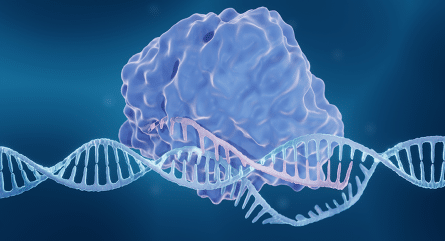The takeaway: CRISPR gene editing technology is being used to fight climate change and make tomatoes more nutritious. But likely its most important and fascinating aspects of use are in medical care.
What are the best CRISPR applications in medicine?
How is CRISPR used? CRISPR medical applications are growing in both number and importance, with new uses emerging at a steady clip. Here are four ways CRISPR may benefit medical care today:
-
CRISPR for genetic disorders There are many genetic disorders that are candidates for treatment using CRISPR. While there are limitations for CRISPR technology to treat genetic disorders, currently there is a possibility to treat monogenic diseases that are caused by small changes, and precedent to treating life-threatening diseases. When it comes to CRISPR treatments, though, sickle cell disease may be the most promising.
Sickle cell disease is a genetic condition present at birth. It is caused by a mutation in a gene that causes red blood cells to become misshapen. This can lead to blocked blood flow, especially in capillaries, and cause pain, infections, and fatigue. Current treatments include medication and blood transfusions, but using CRISPR, researchers hope to restore the blood-forming cells. In such a procedure, bone marrow stem cells would be extracted from a diseased patient and edited using CRISPR to inactivate a gene, BCL11A, which is then put back into the patient’s body. Reports suggest that the treatment is largely successful and FDA approval could even be a possibility.
-
CRISPR for cancer treatment How is CRISPR being used today? CRISPR is showing promising signs in the treatment of some cancers. CRISPR cancer treatments are not as far along as CRISPR sickle cell treatments. However, CRISPR cancer treatment would rely on viral delivery. CAR-T, short for chimeric antigen receptors, are receptor proteins that have been edited so that they can target a specific cancer-causing antigen.
While results so far have been mixed, research is currently focused on creating CAR-T cancer therapies that are more powerful and more effective. One potential therapy could be CAR-T treatment using edited genes from large batches that are pre-made and available to give to the patient immediately instead of waiting weeks or longer for CAR-T genes to be made. This would accelerate the speed with which patients can receive treatment.
-
CRISPR for eye diseases CRISPR is a promising treatment for some people with congenital eye diseases—for example, Leber congenital amaurosis. Leber congenital amaurosis, or LCA, is an eye disorder present at birth that mostly affects the retina and the detection of light and color. Typically, people with this condition have severe visual impairments at birth, and the impairment often worsens over time.
Recently, scientists in China used CRISPR gene editing to reverse vision loss in mice, and the therapy lasted the mice into their old age. Several years ago, LCA treatment in humans was similarly called promising, with treated patients saying they had clearer, brighter vision.
Unlike CRISPR treatments for cancer, which involve taking cells out of the body, editing them, and returning them to the body, cells from a patient’s retina cannot be removed then stuck back in. In this treatment, a virus was modified to include the CRISPR gene editor and then inserted into one eye, with the hopes that if the therapy is successful, it could be used on the other eye. With the CRISPR tool inside the retina cells, it can then go to work cutting out the genetic mutation that causes the disease and reactivate dormant cells to restore vision.
-
CRISPR for infectious diseases As we saw all too clearly with COVID-19, infectious diseases are a critical issue of global concern. CRISPR is helping here, too.
CRISPR has been employed in the fight against human immunodeficiency virus (HIV) as well as hepatitis B and human papillomavirus. With HIV, while antiretroviral therapy and high active antiretroviral therapy have helped control AIDS, those tools are not able to cure the disease since the HIV virus is permanently integrated into the host genome. CRISPR, it is hoped, can target the retroviruses and cut the viral DNA from the host cells’ genomes. Clinical trials to cut HIV from cells are now underway.
Will CRISPR help bring sight to the blind and prevent the next global health pandemic? With so many applications across a broad range of human conditions, this is likely to be an exciting area of research for years to come.
*RUO—For research use only. Not for use in diagnostic procedures. Unless otherwise agreed to in writing, IDT does not intend for these products to be used in clinical applications and does not warrant their fitness or suitability for any clinical diagnostic use. Purchaser is solely responsible for all decisions regarding the use of these products and any associated regulatory or legal obligations.

























